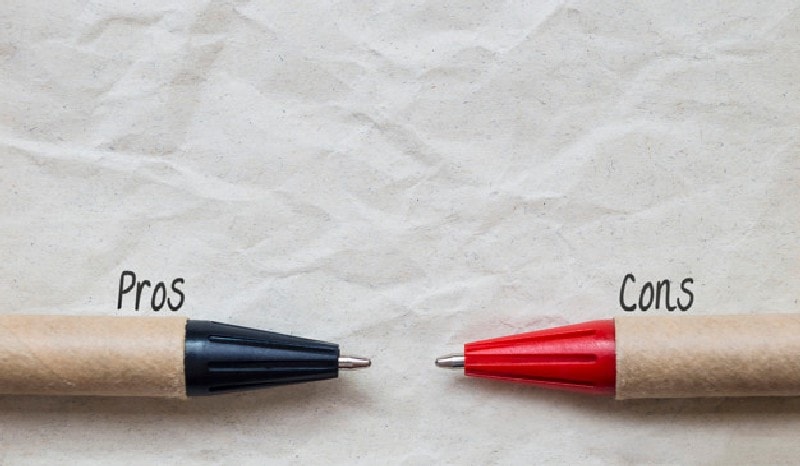Social capital is defined as the goodwill or positive outcome acquired by a firm over a period of time through human interaction. It includes both tangible and intangible outcomes like opportunities in the future, innovative ideas, and valuable information.
Table of Contents
What is social capital?
Social capital is also described as the personal relationship that develops both within and outside a firm that can lead to better performance and efficiency. It also includes shared values, common purpose, shared norms, understanding, cooperation, trust and reciprocal feeling that work for a common good. It is the social capital that has been called the reason for the growth of managerial organizations, high-performance factors in diverse groups and improved strategic alliances.
Social capital is believed to be one of the reasons for the prosperity of an organization. It is actually the resources that the people feel entitled because of their network and social relations.
The social network includes employee satisfaction, mutual trust between them and the communication level between juniors, seniors and peers. These connections lead to friendship, understanding, and happiness and often help to accomplish desired things.
Types of social capital
There are numerous ways of classifying social capital. Generally, you can divide it into two perspectives for instance Network Perspective and Social Structure Perspective. These have been explained below-
A) Network Perspective
From a network perspective social capital can be classified into the following-
1. Bonding social capital
These are links between people who have a greater level of social network. As these are the ties within the same group it is also known as horizontal ties and is referred to as local or neighborhood communities where almost everyone knows everyone else for example friends, family and neighbors.
You will find a greater degree of trust and strong norms that have both positive and negative implications in bonding social capital.
2. Bridging social capital
Bridging as the name suggests is used between people who are acquaintances so that they can meet and connect at a greater level. Bridging social capital is used to maximize the interactions to build bridging capital. One of the most important benefits of bridging capital is the absence of hierarchy as every person has an equal footing within the group.
The vertical ties operate through hierarchical structure and help people to gain access to resources that are considered out of their normal circle.
3. Linking Social capital
This type of social capital is generally associated with voluntary organizations and employees of the same firm. It is a link between people who belong to different places or are facing dissimilar situations like in schools, political groups, public agencies, legal institutions, and business interests.
The ties are considered vertical and are between individuals and groups belonging to different social structures.
4. Identifying social capital
This type of social capital is associated with groups that have shared beliefs and ideologies. For example in a group one person finds a solution, the other tries to implement it and the third tries to sell it to a buyer.
B) Social Structure Perspective
From a social structure perspective social capital can be classified into the following-
1. Structural social capital
This type of social capital is associated with interpersonal links between units or people. The connection is between people and includes procedures, precedents, rules, and roles. Structural social capital is described as a network that an individual knows and can ask for information, assistance, and support.
It gives an opportunity to gain access to people with desired expertise and engage in collective action that is mutually beneficial.
2. Cognitive social capital
This type of social capital is linked to resources that offer shared interpretation and representation among parties. It includes shared beliefs, attitudes, values, narratives, codes, language, and understanding.
3. Relational social capital
This type of social capital is associated with qualities of personal relationships like friendship, respect, obligations, and trust.
Theory of social capital
Social capital is a concept where individuals and groups gain benefits and find solutions to issues through their social networks. It is an interconnected network of interpersonal relationships that gains and transfers benefits and resources by encouraging social ties and participation.
It is most productive when people know each other for a longer duration and in numerous capacities like business partners, friends, neighbors or parents of children going to the same school.
Social participation leads to mutual obligation and this helps in chasing shared objectives. It can happen in civil places, workplaces, religious places, and political offices. Levels of social capital are related to levels of academic performances, employment, economic growth, and even ethnic enterprises.
Advantages
The pros associated with social capital are as follows-
- There is a greater degree of shared understanding
- Greater access to resources
- Shared trust
- Sharing of information
- Shared purpose results in shared action
Disadvantages
The cons associated with social capital are as follows-
- Trust and dependency lead to bias and nepotism.
- Excess of sharing can cause harm
- Shared interest leads to unhealthy and disruptive alliances
- Increase in criminal activities
- Is a reason for herd behavior
Positive impacts of social capital
Social capital has a positive impact on people as it is often considered the route to achieving valuable and desired assets. Social capital does not deal with the skills and know-how of a person instead it is concerned about how that person is interacting with another network, team or people. The collective value that people derive from interactions and the willingness to do things for and with each other is social capital.
An important fact about individuals who share social capital is that there is a greater level of trust and dependence upon each other. This understanding helps in better understanding so that they can work in a healthy and productive work environment.
Two people belonging to the same neighborhood who have been in regular touch will share a close contact. Their affinity and trust towards each other can result in future connections that will prove productive for both or either of them. As per studies that have been conducted social capital is also linked to improved health, achievements, and outcomes as people are somewhat dependent upon such an extensive network.
There are numerous examples of the positive impact of social capital on society, businesses, and even individuals. For example, a person has to suddenly go out in an emergency situation and she has a toddler whom she cannot take with her.
What does she do? Either she calls a neighbor to sit with her child at her home or leaves the child with a person whom she trusts at their home so that she can deal with a sudden emergency. The next time the person needs any help she will be ready to offer it. This is what shared understanding and help is all about and part of social capital.
Negative effects
For every positive, you can find a negative and so is the case of social capital. Sometimes it is also used for destructive purposes, for example, people often collude together to increase or decrease market prices of certain commodities. Mafia cartels take the help of social capital to strengthen their ties inside their group and even hire new members.
The increase of manipulative groups results in an overall decrease in social capital in the city or that neighborhood because potential clients and customers avoid the area. Network with greater bonding leads to sexism, bias, and racism and can create out-group that have a detrimental effect on the area and its people.
Social disorganization theory explains the connection between crime and social capital. It is the structural disadvantages, for instance, greater residential mobility and economic deprivation that leads to negative impact.
Liked this post? Check out the complete series on Business



